|
mtexture-v1-d1 (): Detailed view of textured mountains with the first version of rock texture and snow distribution. The horizontal view angle is about 1°, this image roughly corresponds to the 1° mountain zoom. Snow seems to be modelled already correct, at least at regions of high fractal variation. The rock texture has a yet unreal appearance, beeing too `round' and too less detailed. |

|
|
mtexture-v1-d.1 (): More detail of the first version mountain/rock texture. The horizontal view angle is slightly less than 0.1°. Even at this scale the snow distribution appears very natural. The rock texture reveils a third color, embedded within a dark layer of some material. So far, this corresponds quite well to natural cases. The texture still is too homogeneous and at some parts too round. Nethertheless the overall impression is not too far from the original - especcially under the consideration that this is a vacuum image! |
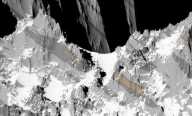
|
|
snow_3.5-4.4km_50d (000d 00h:32m:37s): Second version mountain/rock texture applied to a 50° horizontal view. The snow limit starts at 3500m and ends at 4400m, above there starts the eternal ice. The `sprinkled' snow fields at the snow limit area is typical for snow covered mountains in the spring, where some parts are snow free (`aper'), others just start to melt away. |
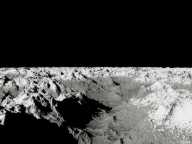
|
|
snow_3.5-4.4km_7d (): Detail of the second mountain/rock texture version at an viewing angle of 7°. Easily visible: At a certain height some snow fields appear, somewhat higher they become larger until they touch and form larger connected fields. Where snow cannot settle due to the high slope of the underground, pure rock becomes visible. It shows the typical structure of multiple layers of various materials, as it is usual for lots of sediments which contributed to the mountains at the time of their generation. |
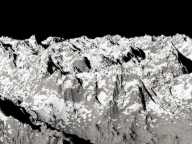
|
|
snow_3.5-4.4km_.5d (000d 01h:21m:05s): |
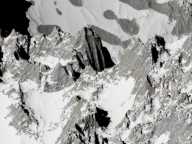
|
|
snow_3.5-4.4km_.03d (000d 01h:55m:29s): |
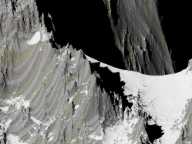
|